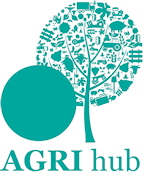Farmers around the world are rapidly adopting Conservation Agriculture (CA) practices, and a new book has collated extensive scientific research, field experience and technical advice into one place.
CA techniques – like cover crops and reduced tillage – have been gaining popularity as an alternative to conventional farming in recent years. But with so many options available it can be hard to know where to start, particularly given different agricultural landscapes and situations.
The new book, Advances in Conservation Agriculture, Volume 3: Adoption and Spread, provides farmers, researchers and academics with key information on practices around the world, reflecting differing local knowledge and techniques.
The area of arable land under CA has grown from two million hectares in 1970 to more than 205 million hectares in 102 countries by 2019. This growth has been driven largely by innovative farmers and machinery manufacturers, who have shared new approaches as they evolve.
“The more farmers that find CA can sustainably boost their incomes, the faster the pace will change,” says Amir Kassam, visiting professor at the University of Reading and editor of the book.
Another important aspect explored in the book is that formal research has been important in developing new and more effective techniques and management approaches. This research has focussed on crop performance, soil health, ecosystem services, global warming and farm incomes. “These validation studies have helped to boost the case for policy and institutional support of CA,” says Professor Kassam.
This is particularly important as the popularity of CA has so far spread largely without explicit supportive government policies. “It seems certain that the rate of adoption could be accelerated by targeted incentives like finance for machinery and management practices to boost soil health and enhance water resources, for example,” he adds.
Although international bodies like the Food and Agriculture Organisation (FAO), have only invested relatively small resources in CA, they have played an important catalytic role. “The FAO has placed ca at the core of its vision for sustainable food and agriculture, particularly for smallholder farmers,” says Professor Kassam.
The book is the third volume in the CA collection and deals with the challenges and opportunities of such practices. It complements the previous two volumes on Systems and Science and Practice and Benefits.
“In each book, chapter authors review 100 to 200 journal articles on the latest CA research and synthesises that into 20 or 30 pages,” explains Rob Burleigh, managing director at Burleigh Dodds Science Publishing.
“Scientists, researchers, farmers and academics don’t have the time to read and synthesise all the latest research – so we have done all the hard work. We can signpost straight to the most appropriate book chapter – it’s a really useful shortcut.”
Qu Dongyu, director general of the UN Food and Agriculture Organisation (FAO) says: “These volumes are a timely celebration of the most progressive change in farming practices over the past 60 years, which is gathering momentum around the world at an extraordinary pace.
“They will serve as an immensely valuable source of reference – and inspiration – for all those who are committed to putting the world’s food systems on a truly sustainable footing.”



